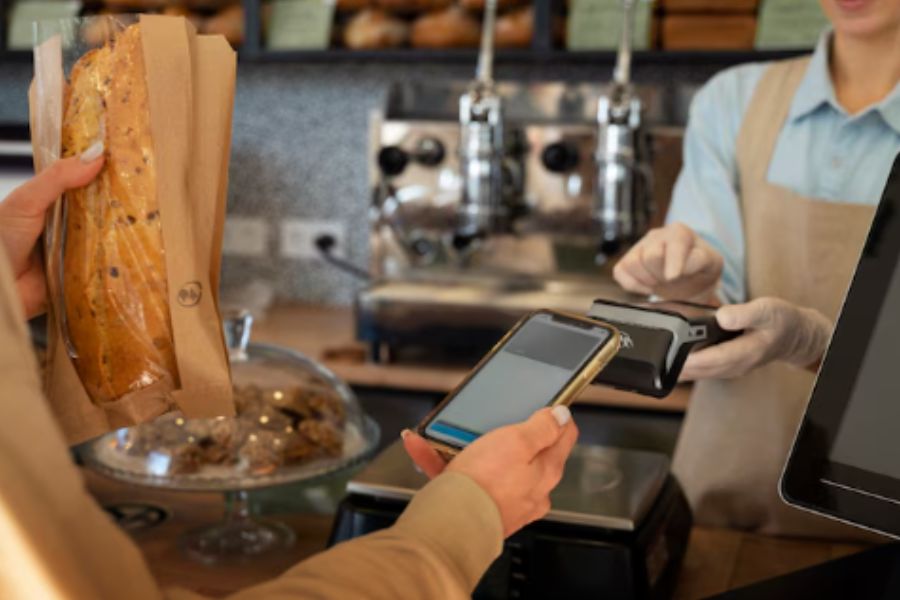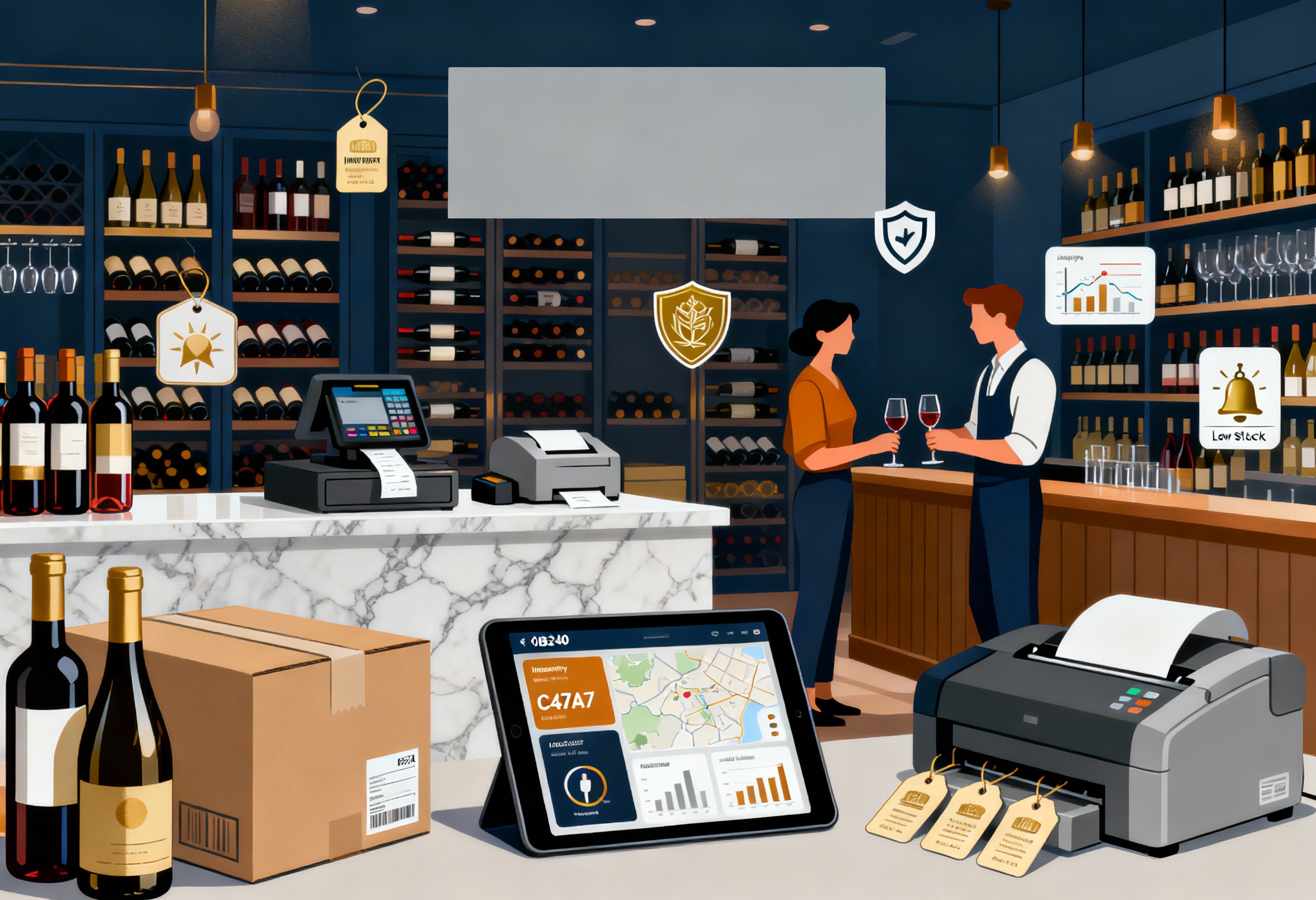Inventory management across multiple stores comes with its challenges, particularly in balancing stock levels to avoid stockouts and overbuying. POS multi store inventory tools play a key role in addressing these issues. These systems provide a centralized view of stock across all locations, allowing businesses to monitor inventory in real-time and make informed decisions.
With the ability to track trends and forecast demand, these tools help retailers make timely adjustments, leading to better operational outcomes and customer satisfaction. This article will show how POS multi store inventory tools prevent stockouts and overbuying.
Highlights:
- POS multi-store inventory tools help prevent stockouts and overbuying by balancing stock across locations, centralizing control, keeping data current, and guiding smarter purchasing decisions.
- Beyond inventory accuracy, these tools also support faster fulfillment, reduce manual errors, and provide clearer visibility into business performance across all stores.
Ways POS multi store inventory tools prevent stockouts and overbuying
In 2023, the total cost of inventory distortion is projected to reach $1.77 trillion, down $172 billion from 2022, with out-of-stocks accounting for $1.2 trillion and overstocks totaling $562 billion.

Stockouts alone are estimated to cost retailers nearly $1 trillion annually worldwide, encompassing not just lost sales, but also the broader negative impacts on customer experience and brand reputation. The way POS multi store inventory tools help prevent stockouts and overbuying is crucial in reducing these costs and improving inventory management efficiency.
Balance Stock Between Locations
POS multi store inventory tools track stock levels across locations in real time, allowing businesses to shift goods intelligently. When a store faces low stock on a fast-selling item, the system can highlight another location with excess inventory.
Managers can then arrange transfers instead of placing new supplier orders, keeping stock flowing without unnecessary purchases. This way, stockouts are avoided at busy stores while slow-moving goods do not pile up elsewhere.
Over time, inventory movement between locations creates detailed insights into demand patterns. POS tools analyze this information to guide decisions about future stock distribution. Managers can plan for peak periods at specific locations and prevent reordering items that have lower sell-through rates. Stock balancing across stores promotes healthier inventory turnover and helps limit the amount of cash tied up in stagnant products.
Centralize Control
POS systems designed for multi-store management bring all inventory data together under one system. Every sale, return, transfer, and adjustment is recorded and reflected across all locations instantly. This unified view allows inventory managers to set consistent policies, apply purchasing rules, and immediately spot unusual trends. Central oversight means decision-making is grounded in complete, accurate information.
Centralization also supports stronger business strategy. When leadership teams can see the full inventory picture across the network, they can align stock levels with marketing campaigns, plan promotions based on available products, and adjust supply chain priorities quickly. Vendor relationships improve when bulk purchasing decisions are backed by true system-wide demand rather than fragmented store requests.
Keep Data Relevant
Real-time updates in POS multi store inventory keep inventory data fresh and trustworthy. Every stock movement, sale, or adjustment is recorded immediately, giving managers and staff the most up-to-date information when making decisions. Without this live accuracy, businesses risk placing unnecessary orders or failing to replace bestsellers in time. Updated data avoids costly mistakes tied to old records.
►►► Optimal solution set for businesses: Multi store POS, Next-gen POS, Inventory Management Software (MSI), Self Service, Automation, Backorders
Beyond day-to-day operations, current data supports smarter forecasting. Live turnover rates and recent sales trends feed into prediction models, helping businesses anticipate changes in customer demand. When data remains relevant, stock purchasing matches actual needs more closely. This approach guards against both overstocking and shortages that damage profitability and customer satisfaction.
Give Staff Access to Inventory
Multi-store POS systems give staff the tools to check inventory status at any time. Employees can verify if an item is in stock, locate it across stores, or even arrange a transfer to satisfy a customer request. When staff can answer stock questions quickly, customer satisfaction improves and missed sales opportunities shrink. Inventory decisions made at the floor level are faster and more accurate when data is easily accessible.
Allowing staff to see inventory also encourages active management. Employees can spot mismatches, missing items, or unexpected low stock before these problems disrupt operations.
First-hand observations by store teams often highlight sales trends early, which can be shared back to the central system. When access to information is wide, business reactions to inventory issues become quicker and better informed.
Highlight Alternatives
POS multi store inventory systems make it easier to present customers with substitute products when a desired item is unavailable. When a product goes out of stock, the system suggests related or similar items available at the same location or nearby stores. Staff can quickly respond to customer needs without losing sales. Providing substitutes keeps purchasing momentum going while managing inventory gaps smoothly.
In a broader view, suggesting alternatives softens the impact of supply chain delays or sudden demand spikes. It encourages a more flexible shopping experience where customers are guided toward available inventory instead of walking away empty-handed.
This method also helps businesses clear slower-moving products by positioning them as valuable choices, which assists in keeping stock levels balanced across all stores.
Improve Buying Strategies with an Inventory Control System
Inventory control tools inside modern POS multi store inventory record real-time data that reveals exactly how products move across locations. Purchase planning becomes smarter because it is based on patterns like seasonal shifts, local preferences, and actual turnover rates rather than guesswork. Accurate stock movement records help businesses focus on true demand instead of repeating old purchasing habits that often lead to overstocking or empty shelves.
Better buying strategies also stem from clear visibility into lead times and supplier reliability. Knowing how quickly stock replenishes allows businesses to adjust ordering cycles.
Relying on live data keeps product assortments fresh and aligned with consumer expectations. Businesses avoid stacking up slow sellers and missing out on items that are in higher demand, achieving steadier cash flow and stronger inventory health.
Educate Your Customers
POS systems help staff communicate clearly with customers about stock availability, alternatives, and pre-order options. Customers who understand why an item is unavailable and what choices they have feel more informed and more willing to continue shopping. Staff can suggest items available in nearby stores or recommend online options connected to the same inventory system, giving customers easy solutions rather than frustration.
Educating customers also helps set realistic expectations around product availability during high-demand periods. If shoppers are aware of when restocks are expected or what products fit their needs just as well, they tend to trust the business more. Trust leads to stronger loyalty even in cases where stock is not immediately available.
A well-informed customer is more patient and often more open to trying different products, helping businesses manage stock levels more effectively across all locations.
Additional benefits of POS multi store inventory tools
Managing inventory across multiple stores goes beyond avoiding stockouts or excess products. By connecting systems and tracking data, businesses can unlock value. Multi-store POS inventory tools enhance supplier relationships, improve financial management, and boost staff performance, creating a ripple effect that fosters growth and strengthens daily operations.
- Strengthen supplier relationships: Accurate purchasing data from all stores builds trust with suppliers, making negotiations smoother and agreements more favorable. Suppliers prefer working with businesses that show clear evidence of sales trends across their network rather than fragmented orders from individual outlets. This foundation often leads to faster fulfillment times, better stock availability, and stronger collaboration on future supply needs.
- Improve cash flow: Better control over inventory purchasing keeps stock levels aligned with actual customer demand, helping businesses avoid tying up cash in unsold goods. Lower storage needs and fewer write-offs from expired products create extra financial flexibility. Businesses that maintain tighter inventory management tend to have better access to growth opportunities because cash remains available rather than trapped in surplus stock.
- Increase staff productivity: A connected inventory system means less time spent on manual checks, hunting for items, or fixing record errors. Staff can focus on serving customers, improving sales, and maintaining store presentation instead of getting pulled into stockroom tasks. Managers also spend less time correcting inventory discrepancies, freeing them up to concentrate on planning and team development.
Using ConnectPOS for Better Multi Store Management
Retailers running several locations face constant challenges when it comes to managing stock. Without real-time visibility, it becomes easy to miss inventory gaps or overload stores with unnecessary goods. ConnectPOS multi-store POS brings a unified structure that helps businesses maintain the right inventory levels across all locations.
- Real-time Inventory Synchronization: ConnectPOS keeps inventory data fresh across every store and online channel. Clear visibility into current stock levels prevents lost sales during unexpected demand surges while avoiding overordering based on old numbers or isolated views.
- Unified inventory management: It helps retailers transfer items between locations when one store has too much and another too little, eliminating the need for excess purchasing. This practice promotes a healthier flow of stock and avoids overloading certain locations with unsold items.
- Unified Sales Trend Analysis:All-store performance management gathers data on sales patterns, peak times, and slower-moving products in one central view. This analysis from ConnetPOS’s system leads to better-informed purchasing decisions, helping businesses predict demand with more accuracy and plan restocks based on actual trends, minimizing stockouts and unnecessary purchases.
- Integrated Omnichannel Visibility: Integrated omnichannel selling brings together both online and in-store sales, making it easier to respond to changes in demand. When one channel experiences a spike in orders, inventory levels are adjusted across the board, preventing unnecessary over-purchasing for physical stores while meeting customer demand.
- Customizable workflow automation: ConnectPOS POS multi store inventory allows businesses to set automated reorder points that reflect current stock levels. This keeps purchases tied to real-time conditions, stopping overbuying by ensuring that restocks happen only when needed.
- Store-specific insights: The system gives retailers the ability to tailor purchasing strategies based on each store’s individual performance. This helps to avoid overbuying by making sure stock decisions are based on local demand patterns, rather than applying the same approach to every location.
- Centralized customer profiles: ConnectPOS enables businesses to personalize offers and promotions, leading to more predictable purchasing behavior. When promotions align with customer preferences, sales increase, and inventory moves faster without the need for excessive stock in anticipation of random purchases.
- Cross-Store Order Fulfillment: Cross-store order fulfillment helps keep inventory balanced by allowing customers to order from one store and pick up from another or have items shipped from a different location. This system spreads inventory evenly across all stores, helping prevent shortages and excess stock.
- Connected System Integrations: With ConnectPOS’s integration network, various systems like CRM, ERP, and accounting tools work together to inform purchasing, inventory, and sales decisions. This connectivity ensures that inventory management is accurate and balanced, avoiding both stockouts and overbuying.
FAQs: POS Multi Store Inventory
How do POS multi store inventory tools help manage stock levels?
These tools track real-time inventory across all locations, giving businesses a full view of what’s available. Managers can make smarter decisions about replenishing goods without depending on manual counts.
Can these tools help predict future stock needs?
Yes, many systems study sales patterns over time. This helps businesses prepare for peak seasons or special promotions without piling up excess stock.
What happens if one store runs low on an item?
The system can flag shortages early. Staff can then arrange transfers between locations before items run out, helping to balance inventory across stores.
Are reports available for better stock control?
Most POS inventory tools like ConnectPOS produce detailed reports showing sales trends, slow-moving products, and upcoming restock needs. Teams can review these reports to fine-tune their purchasing.
Conclusion
POS multi store inventory tools provide businesses with the ability to monitor stock levels across various locations, helping prevent stockouts and overbuying. These systems allow retailers to track trends and forecast demand, which leads to better decisions in inventory management. A balanced approach to inventory drives smoother operations and higher customer satisfaction.
For those seeking to improve their inventory management, ConnectPOS can provide a solution. Let’s see how ConnectPOS can make a difference in your business. Contact us today!
►►► Optimal solution set for businesses: Shopify POS, Magento POS, BigCommerce POS, WooCommerce POS, NetSuite POS, E-Commerce POS



